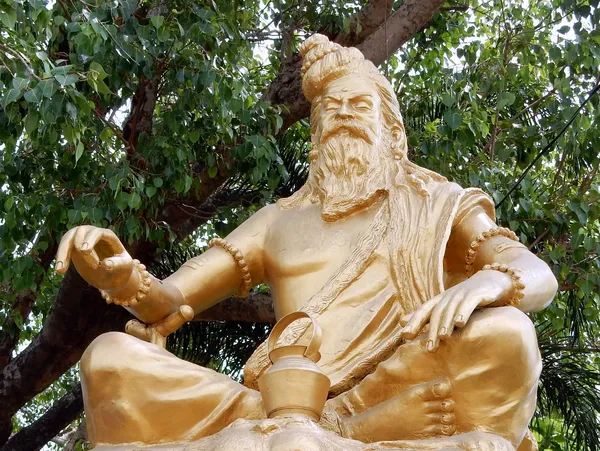Dard Shina Culture-Link to SSC

Dard Shina Culture-Link to SSC
According to folk etymology, the name “Kashmir” means “desiccated land” (from the Sanskrit: ka = water and shimīra = desiccate). In the Rajatarangini, a history of Kashmir written by Kalhana in the mid of 12th century, it is stated that the valley of Kashmir was formerly a lake. According to ancient Hindu text, the lake was drained by the great rishi or sage, Kashyapa (Photograph towards left), son of Marichi (son of Brahma, the creator of the universe) by cutting the gap in the hills at Baramulla (Varaha-mula). Amazingly, a bird’s eye view, courtesy Google Earth. The geography of Kashmir valley matches perfectly with the ancient Hindu text. Clearly the valley, with river Jhelum as its principal drainage seems a vast lake of sea proportions. It drains out even today through a gorge near Baramulla, the Varahmula of ancient times. When Kashmir had been drained, Rishi Kashyapa asked Brahmins to settle there. The name of Kashyapa is by history and tradition connected with the draining of the lake and the chief town or collection of dwellings in the valley was called Kashyapa-pura, which has been identified with Kaspapyros of Hecataeus (apud Stephanus of Byzantium) and Kaspatyros of Herodotus.


History
According to folk etymology, the name “Kashmir” means “desiccated land” (from the Sanskrit: ka = water and shimīra = desiccate). In the Rajatarangini, a history of Kashmir written by Kalhana in the mid of 12th century, it is stated that the valley of Kashmir was formerly a lake. According to ancient Hindu text, the lake was drained by the great rishi or sage, Kashyapa (Photograph towards left), son of Marichi (son of Brahma, the creator of the universe) by cutting the gap in the hills at Baramulla (Varaha-mula). Amazingly, a bird’s eye view, courtesy Google Earth. The geography of Kashmir valley matches perfectly with the ancient Hindu text. Clearly the valley, with river Jhelum as its principal drainage seems a vast lake of sea proportions. It drains out even today through a gorge near Baramulla, the Varahmula of ancient times. When Kashmir had been drained, Rishi Kashyapa asked Brahmins to settle there. The name of Kashyapa is by history and tradition connected with the draining of the lake and the chief town or collection of dwellings in the valley was called Kashyapa-pura, which has been identified with Kaspapyros of Hecataeus (apud Stephanus of Byzantium) and Kaspatyros of Herodotus.






